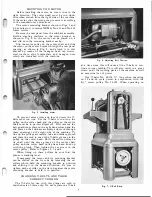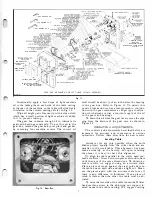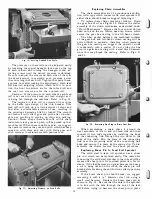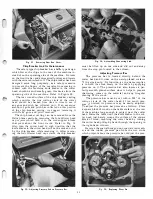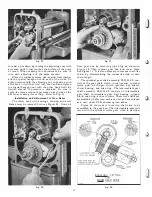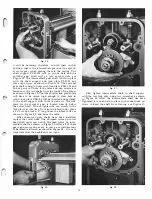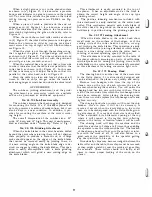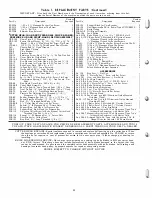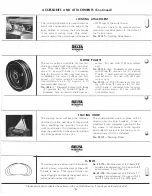
Fig.
45.
Rear View - Planing Thin Stock.
%". To produce a smooth even surface, we suggest
the operator joint one face of the backing board to
remove any unevenness or warping before reducing
it to the desired thickness.
Raise the table of the planer allowing for the thick
ness of the backing board plus the thickness of the
thin stock. Lay the backing board on the surface of
the table, then place the thin piece on the backing
board. Be sure to center the thin stock on the backing
board before starting the operation.
Planing Short Stock
Stock any width up to 13" and as short as 6" long
unbutted (without a following block) can be planed
perfectly smooth and even to the desired thickness
easily. Short stock butted (with a follower) any width
up to 13" and as short as 3" long can be rapidly planed
Fig.
46.
Planing Short Stock.
19
perfectly smooth with an even surface to the desired
thickness.
Place a follower block of the same thickness square
ly with the piece before it so their edges match. This
will prevent chipped or splintered edges. Be sure to
hold the follower block against the piece before it
tight and squarely in line with it until the serrated
in-feed roll starts to push the follower block into the
machine. Refer to Fig. 46.
Irregular Cuts
There are times when the cutter head will make
irregular or uneven cuts, which are made because
certain adjustments of the machine are out of line.
GROOVE
Fig.
47.
The most common of these and what to do to
correct them are listed below.
When a ridge appears on the work as shown in
(1) Figure 47. it indicates that the infeed table roller
is too high. To correct this it will be necessary to
lower the infeed idle roller in the table. These rollers
are set at the factory at .005" above the level of the
table, which is the maximum, if the rollers are more
than .005" the above condition will result, refer to
Figure 16.
Summary of Contents for Milwaukee PM-1738
Page 1: ...13x5 INCH DELTA MILWAUKEE 7 7 1M rJ6fiUAKJ PM 1738 ...
Page 2: ......
Page 27: ......
Page 28: ......

